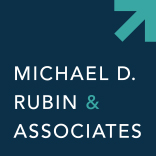Whether our public radio stations have been around for some years or are relative “newbies,” one thing is certain: we all must raise money to remain vibrant and relevant.
And simply “raising money” is one thing; building relationships with major donors to eventually yield “leadership gifts” is quite another.
Public radio stations should have success with major and transformational gifts on a par with their counterparts in the cultural nonprofit arena—the art museums, botanical gardens, history museums, zoos and symphonies. Many stations are now putting more emphasis on “relational” fundraising (a donor gift made over several years, through building trust via face-to-face visits over time), rather than on “transactional fundraising” (a member pledge in return for a premium, responding to an on-air drive).
To achieve success, you first have to start with using the language of major gift donors. Generous acts are known as philanthropy (“love of mankind” in Greek). It is a noble thing to both give and raise money. Donors, lay leaders, and development professionals should feel privileged to be part of the process.
Next, stations must hit the road to share visionary plans with donors who have the interest and capacity to make a difference. Transformational and strategic plans which will resonate to attract significant, far-reaching philanthropic support. That’s different than asking members to give so you can remain on the air. See the difference?
And finally, to improve our non-profit fundraising success, it’s worth looking at skill sets in the for-profit world.
Major gift fundraising, after all, is about understanding the needs of a “customer,” what his/her needs and motivations are, and how your “product” benefits the customer and helps fulfill those needs.
Yep, it’s really SALES. The dreaded “S” word. There, I’ve said it.
We don’t utter the word, because it seems so… crass, so for-profit, diametrically opposed to public radio (even though the Underwriting staff might not agree.)
But there is merit to borrowing best practices from successful salespeople and applying them to our fundraising. Truly, our boards, CEOs and development professionals are making “sales” to prospective donors—conveying the benefits of public radio, persuading donors to invest in the very best in journalism, talk, issues and cultural/artistic entertainment. Can you find a better return on investment than that?!
Let’s look at four priority areas for salespeople which adapt nicely to public radio fundraising:
1. They start with a dollar goal for closed sales.
In fundraising, it’s called a gift pyramid: total philanthropy needed, broken down to X gifts at $25,000, Y gifts at $10,000, Z gifts at $5,000, etc. Focus on the top and middle levels of the pyramid.
2. They create a detailed Sales Plan.
Why would you undertake anything this complex and important without a plan?
Highlights include:
- What’s the case for support?
- How will a making a gift benefit the donor? The community?
- Who is most likely to be passionate about public radio and has resources to invest?
- Why philanthropy and not government, university or community funding? What’s the urgency?
3. They break down their Sales Plan to a specific number of monthly sales visits.
- Face-to-face meetings are proven to be the most successful predictor of closed sales
- In these sessions, we can develop relationships, discover customer likes/dislikes, share progress, seek business advice and thank for previous gifts
- Personal visits from the right people convey a sense of importance about public radio and help understand donor needs and motivations.
4. They budget time to hit their sales visit goals before scheduling anything else.
- Major donor visits—to qualify, cultivate, solicit and steward–must get scheduled first
- Figure on seeing four or five donors in a day
- If you can persuade donors to tour the station, it’s more compelling
- But take your visits where it is most convenient for the donor.
Remember: it’s all about the donor, not about your station.
So, don’t be afraid to say the “S” word. Borrow from the best practices of successful salespeople to bring goal-setting, discipline, face-to-face major donor visits and priority-setting to your station. You will reap the benefits in reaching and exceeding your philanthropy goals—while developing more engaged, informed, and loyal donors.
